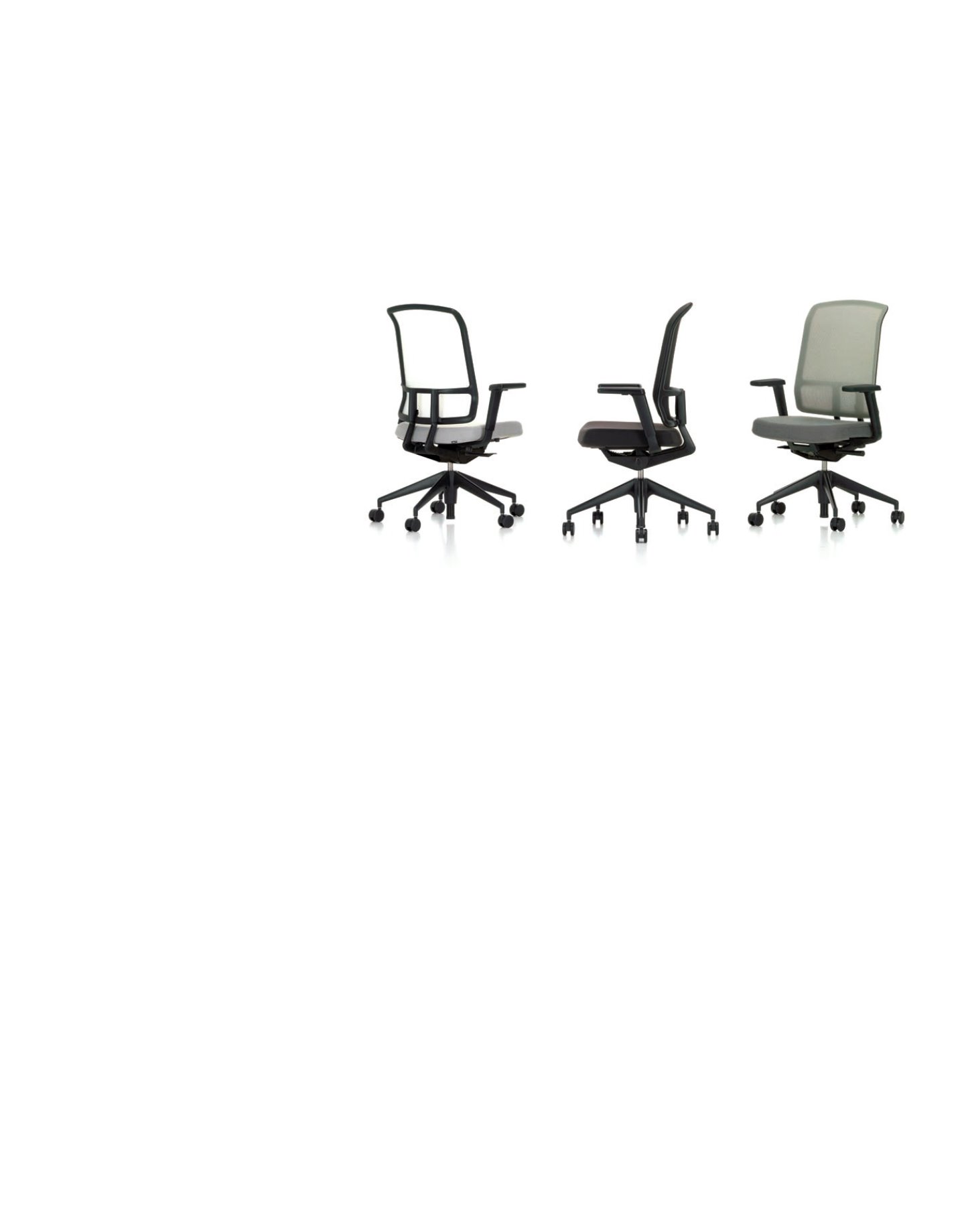

21
Officelayout 169
aprile-giugno 2017
New work seating embraces simplicity!
Light and flexible, the new seats interpret changes in the world of work with
cross-performance functioning and discreet, user-friendly adjustments
The transformation of seating corresponds
to changes that have deep roots and involve
all aspects of design: mechanics, form and
function. The most significant turning point
came in the 1990s, when innovation in the
field of materials and the production chain
made it possible to create comfortable
seating that would move in the direction of
reduction of bulk. The market witnessed the
arrival of a new generation of seats that
abandon classic padding in favor of screens
with elastic, supportive properties. At the
same time, the study and development of
advanced ergonomic solutions led to
refinement of the mechanical parts of
seating for precise adjustment to the
characteristics of individuals, though in
some cases the more extreme solutions had
a negative impact on the design.
Another factor of change was the
transformation of the role of seating in
interior design, where architects and
designers began to see it not just as an
accessory, but as a true protagonist of the
project space, taken into account from the
earliest phases. This led manufacturers to
expand the variety of their offerings and
finishes, colors and details, generating true
collections that introduced languages closer
to those of the home.
More recently, following the introduction
of smart working methods, the demand for
distinctions of rank has been reduced,
along with the need to differentiate seating
types into categories: managerial,
operative, visitor.
Work has become much more flexible in
terms of roles and periods of time spent in
the office, so it requires versatile solutions
to adapt to multiple uses and users,
alternating over the course of the day. The
sector has begun to define new concepts,
again relying on technological evolution of
materials and mechanisms, with the goal of
developing light cross-performance
products that encourage movement and
permit high levels of personalization.
Products that are easy to move and can
adapt to continuous use spread across an
8-hour day, but can also be used for
impromptu meetings with colleagues,
clients and external collaborators.
Seating continues to be a clear factor of
wellbeing, thanks to the development of
more discreet but effective ergonomic
solutions that make adjustments user-
friendly, and self-regulating in many cases.
Finally, the focus on environmental
sustainability has entered a mature phase,
with an impact on every step of the
production chain, from the selection of
materials to design, production and
distribution.
A seat for multiple uses
Office spaces become hybrid,
deconstructed, in keeping with a principle
of activity-based working. They are
enhanced by diversified spaces and non-
assigned workstations to let people move
freely inside spaces, performing different
activities in different teams.
Our way of experiencing seating also
changes, no longer approaching it in terms
of continuous use by the same person
across the entire workday. Seating becomes
flexible, adapting to spontaneous situations.
“People require freedom and variety of
worksettings to support different types of
activities – says Mario Colombo, sales
director Iberia-Italy-East Mediterranean of
Herman Miller. – In the area of seating there
is a demand for cross-performance
solutions that work for a quick brainstorming
session, but also for long hours of
concentration on a particular task.
Performance design, applied to new
products, is an approach that links back to
the framework of human-centric design, i.e.
complete observation of the individual and
his body as he performs his tasks across the
working day: a true holistic analysis of
measurements, proportions, sizing, applied
to the movements that happen in a seated
position. Designers have to solve issues on
multiple levels, not just connected with
functional efficacy or good looks, but also
with verifying that the use of the object can
improve the quality of life of the worker.
Starting with awareness of the fact that the
workplace has gone through sweeping
Braccioli dinamici e schienale regolabile in altezza per la
AM Chair
, disegnata da Alberto Meda per
Vitra
. Il meccanismo sincronizzato assicura un comfort personalizzato senza dover regolare il
meccanismo a priori









